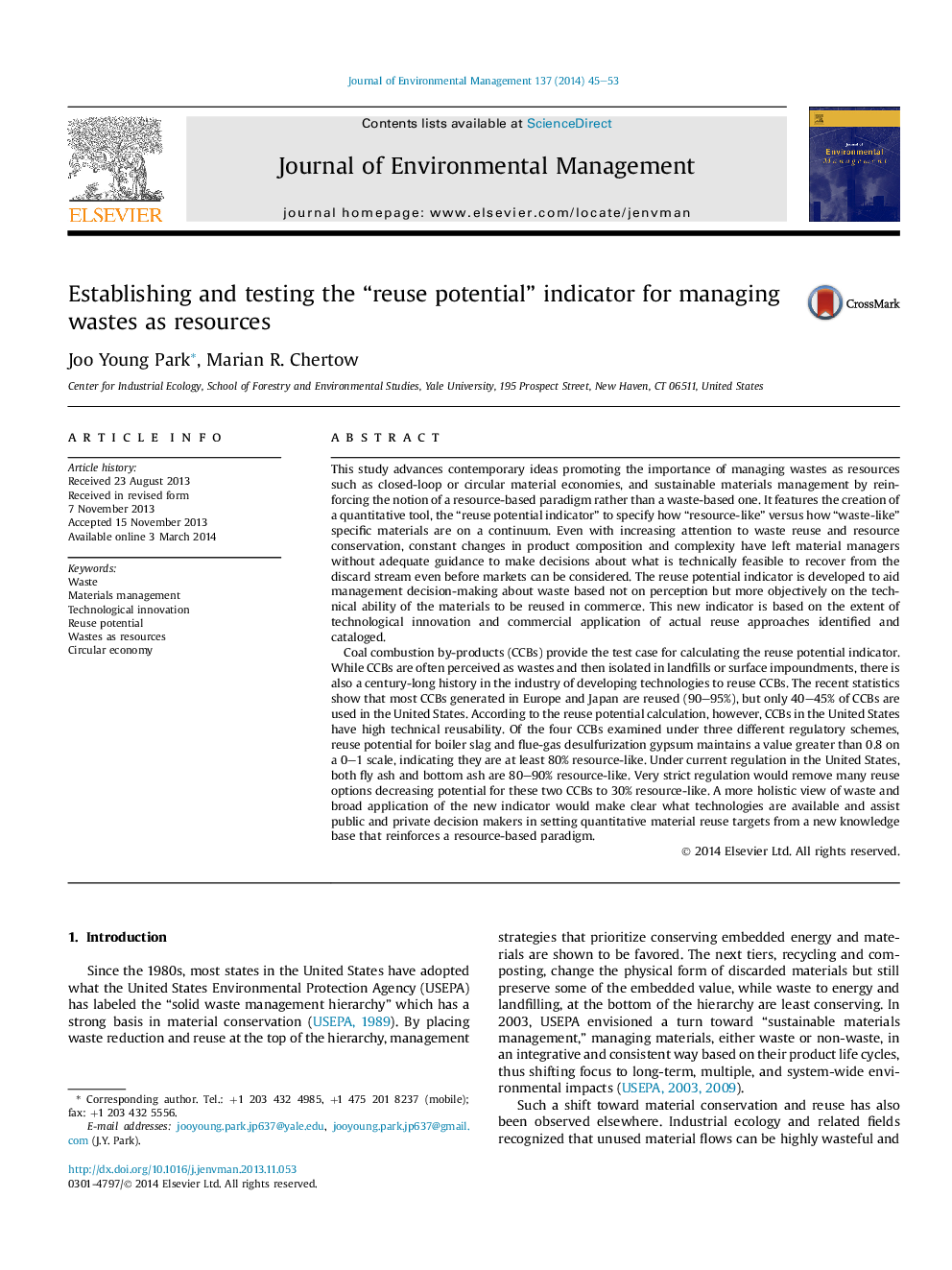| کد مقاله | کد نشریه | سال انتشار | مقاله انگلیسی | نسخه تمام متن |
|---|---|---|---|---|
| 1055725 | 1485275 | 2014 | 9 صفحه PDF | دانلود رایگان |

• New tools are needed to operationalize the move to view wastes as resources.
• The proposed reuse potential indicator quantifies technical reusability.
• The tool specifies a continuum of how resource-like or waste-like materials are.
• Coal combustion by-products (CCBs) provided the test case for the new indicator.
• CCBs in the U.S. in 2009 were 80% resource-like in a base case but reuse was 41%.
This study advances contemporary ideas promoting the importance of managing wastes as resources such as closed-loop or circular material economies, and sustainable materials management by reinforcing the notion of a resource-based paradigm rather than a waste-based one. It features the creation of a quantitative tool, the “reuse potential indicator” to specify how “resource-like” versus how “waste-like” specific materials are on a continuum. Even with increasing attention to waste reuse and resource conservation, constant changes in product composition and complexity have left material managers without adequate guidance to make decisions about what is technically feasible to recover from the discard stream even before markets can be considered. The reuse potential indicator is developed to aid management decision-making about waste based not on perception but more objectively on the technical ability of the materials to be reused in commerce. This new indicator is based on the extent of technological innovation and commercial application of actual reuse approaches identified and cataloged.Coal combustion by-products (CCBs) provide the test case for calculating the reuse potential indicator. While CCBs are often perceived as wastes and then isolated in landfills or surface impoundments, there is also a century-long history in the industry of developing technologies to reuse CCBs. The recent statistics show that most CCBs generated in Europe and Japan are reused (90–95%), but only 40–45% of CCBs are used in the United States. According to the reuse potential calculation, however, CCBs in the United States have high technical reusability. Of the four CCBs examined under three different regulatory schemes, reuse potential for boiler slag and flue-gas desulfurization gypsum maintains a value greater than 0.8 on a 0–1 scale, indicating they are at least 80% resource-like. Under current regulation in the United States, both fly ash and bottom ash are 80–90% resource-like. Very strict regulation would remove many reuse options decreasing potential for these two CCBs to 30% resource-like. A more holistic view of waste and broad application of the new indicator would make clear what technologies are available and assist public and private decision makers in setting quantitative material reuse targets from a new knowledge base that reinforces a resource-based paradigm.
Figure optionsDownload as PowerPoint slide
Journal: Journal of Environmental Management - Volume 137, 1 May 2014, Pages 45–53